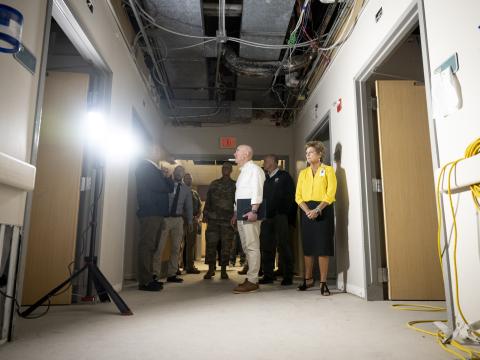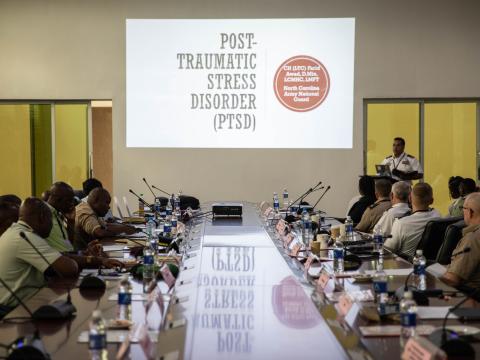Armed Ground Robots Prepare for Action
The conflicts in
A range of technological and cultural obstacles have prevented the use of armed UGVs, but an ongoing series of robot prototypes that soon may see active service now are being tested. The Army is evaluating the modular advanced armed robotic system (MAARS) robot, which was designed based on lessons learned from its predecessor, the special weapons observation reconnaissance detection system (SWORDS). According to Lt. Col. Matt England,
Col. England has been involved with Army UGV development for eight years, and he helped introduce the first robots to search caves in
But the robots performed so successfully in
It was not until the introduction of improvised explosive devices (IEDs) in
The MCOE also worked with Foster-Miller, a subsidiary of QinetiQ North America that designed and manufactured SWORDS and MAARS. SWORDS, a modified Talon EOD robot, had many limitations, including top-heavy weapons placement and uncontrolled movements of its weapon. A mistake involving an armed robot, especially the accidental death of a civilian, could set UGV research back a decade, the colonel warns.
Col. England was against the combat deployment of SWORDS for two reasons: the robot’s safety in terms of mechanical reliability and ineffective training. “Nobody had the remotest idea of how to employ a ground robot,” he says.
The 3rd Infantry Division did deploy a handful of SWORDS robots in
The colonel wanted a realistic assessment for a small, armed ground robot. The goal would be to provide troops with a UGV, train them, then give the unit a mission. This type of operational experience would allow the center to develop the doctrine and training to properly deploy small, armed robots. When the right robot equipment, unit training and doctrine come together, the Army will be closer to understanding how to use and deploy them, he believes.
Noting that SWORDS was a valuable prototype, Col. England adds that an armed UGV system had to be designed especially for infantry use. MAARS was a result of the feedback from the SWORDS development. The colonel convinced Foster-Miller to design MAARS by combining all of the advantages of and experience from SWORDS in a platform that warfighters could use to develop training and doctrine.
Besides small armed and utility robots, Col. England also was involved with introducing micro-robots—very small machines that weigh one and a half to two pounds—to Army infantry units. They are designed for soldiers to throw into buildings to provide vital intelligence before troops enter the structure. The center partnered with the U.S. Defense Department’s Joint Ground Robotics Enterprise, which provided a number of small robots for testing.
The final area of robotics development Col. England oversees is load-bearing robots such as the multi-function utility/logistics and equipment (MULE) robot originally developed for the Future Combat Systems (FCS); however, he chose not to use MULE in an assessment scheduled for this month. While MULE was developed to support FCS, it is not a device that current Army units want, so unless the service’s leadership presses the MCOE to use it, he will not accept MULE, he explains.
The colonel is against using MULE for many reasons; one of its key drawbacks is its weight. The robot, designed to support a platoon of infantry by carrying equipment and recharging batteries, has become too big with the addition of capabilities such as communications systems. A CH-47 Chinook heavy-lift helicopter can carry it, but the aircraft cannot also carry the platoon the robot will support.
Instead, Col. England explains that he has gone back to the drawing board to create requirements for a load-bearing robot designed to support an individual squad. Such a robot must be small and semi-autonomous as well as feature a battery-charging capability. What he does not want, he maintains, are too many bells and whistles—it should be focused on supporting a squad.
More information about MAARS will be available in the September issue of SIGNAL Magazine, in the mail to AFCEA members and subscribers September 1, 2009.



